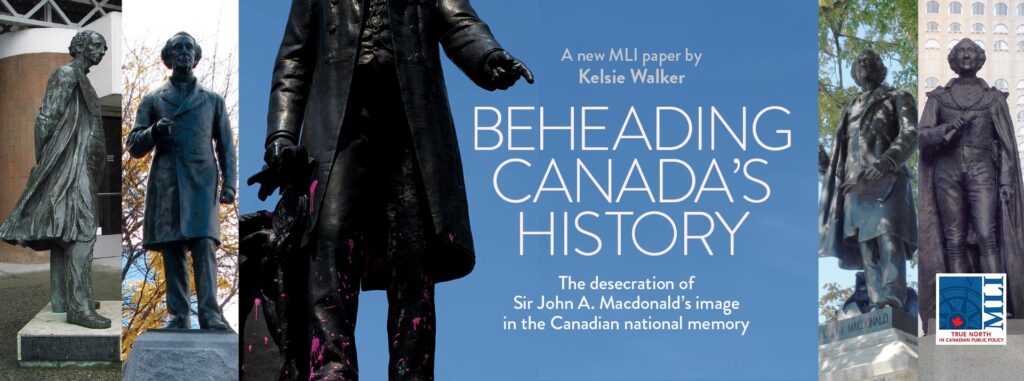This article originally appeared in the National Post.
By Paul W. Bennett, November 11, 2024
Sackville Heights, a Nova Scotia elementary school in the Halifax Regional school district, will live on in infamy whenever Remembrance Day rolls around in Canada. After announcing in a November 2024 parent newsletter that service members and veterans were not to attend a Nov. 8 school ceremony wearing military uniforms, school principal Rachael Webster rescinded that policy in the face of an immediate backlash.
On the eve of the ceremony, the Halifax Regional Centre for Education beat a hasty retreat, likely precipitated by a very public condemnation from N.S. Premier Tim Houston. “Leaders at this school,” he wrote, “are disgracing themselves while demeaning the people who protect our country.” That prompted an apology issued in a statement bearing the signature of the beleaguered principal: “I recognize this request caused harm, and I am deeply sorry.”
The school district attempted to explain it all away with a principal admitting a simple mistake, even though the district was reportedly aware of the advisory before it was put in writing in the newsletter. No one, up to and including Remembrance Day, could explain how and why it happened.
Digging deeper into the incident, it looks less like an error in judgement and more like a mutation of what is known as the “trauma-informed” approach to teaching today’s students. The principal, in this case, may be bearing far too much of the responsibility for exceeding the rather nebulous limits of “trauma-informed” school climate policy.
School district officials, including the principal, at first, offered up a rather lame rationale that some students from “countries experiencing conflict” experienced “discomfort with images of war” which included “those of individuals in military uniforms.” The stated goal was to “make sure everyone taking part in our ceremony could feel comfortable.” That’s drawn, chapter and verse, from provincial policy guidelines that have all materialized over the past decade in Nova Scotia schools, health care institutions, and child care facilities.
The Halifax school’s response was merely the latest manifestation of the widespread movement to adopt “trauma-informed approaches” and transform classrooms into safe spaces and therapeutic centres of care. Over the past thirty years, social psychology has overtaken much of educational policy, including curriculum and program. It may surprise Premier Houston and politicians condemning the banning of service uniforms that it is, in fact, embedded in Nova Scotia education policy and practice.
Our public schools, following the lead of health and social service providers, have adopted the approach and integrated it into leadership and teacher training programs, especially in major metropolitan school systems like those in Halifax.
Teaching disadvantaged kids, immigrant newcomers and refugee children has come to mean applying therapeutic strategies in a well-intended attempt to alleviate the “prolonged stress and trauma” experienced by those students. In a learning environment, a trauma-informed approach means creating a school culture that understands trauma; recognizes the signs and symptoms of trauma; realizes the widespread impact of trauma; actively makes space for learning; and creates safe physical and psychological spaces for everyone.
Sound familiar? It should — because that’s what informed the school’s whole approach to commemorating Remembrance Day.
Therapeutic approaches work in clinical settings. Applying the whole trauma-informed approach across the board in schools is fraught with difficulties. It also flies in the face of what leading researchers have found studying groups of children and teens arriving from war-ravaged countries. Children of refugees from Sub-Sharan Africa, Israel, and Syria are often inoculated against trauma and far more resilient than comparable Canadian-born cohorts of kids.
One of the world’s leading authorities on resilience among children and youth across cultures, Dalhousie social work professor Michael Ungar, has long warned about the unintended effects of “removing meaningful rites of passage through which children experience manageable risk.” More recently, American social psychologists Greg Lukianoff and Jonathan Haidt’s The Coddling of the American Mind and Canadian clinical psychologist Simon Sherry have identified “safetyism” or the over-emphasis on safety as a major contributor to our kids becoming more anxious and less resilient.
Barring service uniforms and veterans from a school Remembrance Day ceremony was a colossal blunder, but it’s also symptomatic of wider trends eroding what’s left of historical commemoration in our schools.
Only one day of the year is reserved for Remembrance Day, the only day dedicated to acknowledging the horrors of war and to recognizing those who served our country in uniform and, particularly, those who paid the ultimate sacrifice.
As a former history teacher and school head, it was a high priority for me and, from 1977-78 until 2008-09, I poured much of my time and energy into ensuring the Remembrance Day ceremony was impactful and packed with moving life lessons about war, peace, and human sacrifice. Twice, I was recognized by the Historica Institute’s Memory Project with awards for my commitment to educating children to the horrors of war without glorifying the carnage and reminding students of how we achieved an enduring peace.
What happened in that Halifax elementary school was most likely not an isolated incident and, since that’s the case, more needs to be done to revive a sense of historical consciousness and to change the school leadership culture for the sake of future generations.
Let’s begin by developing a system-wide policy and guide for the proper public commemoration of earth-shaking historic events, including Remembrance Day, Thanksgiving Day, Terry Fox Day, Residential Schools Apology Day and Global Pandemic Declaration Day that, over time, fade from contemporary public consciousness.
Paul W. Bennett is senior fellow, education policy, Macdonald-Laurier Institute, director at Schoolhouse Institute, and adjunct professor of education at Saint Mary’s University. Two of his most recent research reports are Pandemic Education Fallout: Learning Loss, Collateral Damage and Recovery in Canada’s Schools and Weapons of Mass Distraction: Curbing Social Media Addiction and Reclaiming the Smartphone Generation.







